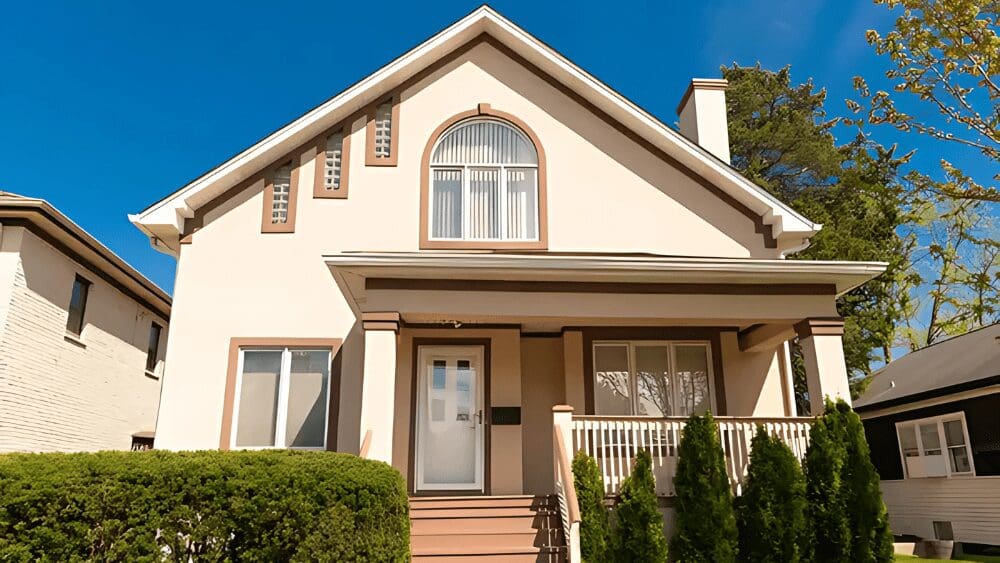“This house isn’t for you anymore; it’s for the next set of people,” says Michelle Vasey, owner of Mode Staging & Design in Oakland, CA, who has more than 30 years of experience in the real estate and staging business.
As hard as it sounds, you need to depersonalize the house to sell it. Try to see it through a stranger’s eyes and think: zero clutter, warm wall palettes, soft textures, and small bursts of color — you’re aiming for neutral, but still charming!
“What you’re giving them is a glimpse of how the home could be lived in, not how the home is being lived in at the time.”
Step one: Talk to an expert!
Selling your house soon? Connect with a top agent near you to get an expert opinion on how much your house will sell for, what to fix before listing, and the latest local housing market trends.
Depersonalizing your home can be overwhelming, so let’s walk through techniques and DIY projects for tackling a home’s worst offenders one by one.
Focus your depersonalization projects on these 3 major living areas
Depersonalizing a home goes hand in hand with home staging and design. Staging a house involves rearranging furniture and adding decor to make it look irresistible during walkthroughs and listing photos. But it starts with a blank canvas.
“You have to take your personal experiences out of the house and let the professionals come in,” advises Vasey. “Your Realtor and your stager will work as a team to help you get the most money for your property.”
If you’re like many sellers, you’ve set a deadline for listing your home and it needs to be show-ready by that date, so it helps to know where to focus your home prep efforts in case you run out of time.
Research shows that the rooms buyers care most about (and Realtors believe are the most important spaces to stage) are the living room, primary bedroom, and kitchen. If nothing else, make sure you depersonalize those three key rooms before you open the doors to buyers.
Cover up patterned, bulky furniture specific to your tastes
The living room and dining room are two places where the wrong furniture can create a big mental roadblock for buyers.
These are the spaces where families often spend the most time together, so having the right furniture situated properly is comforting and welcoming for home buyers.
You have a couple of options for dealing with older, clunky furniture — remove these treasured but worn pieces of furniture and put them in storage (if you still plan to keep them) or cover them up with neutral fabrics.
You can get slipcovers to hide your furniture’s wear and tear and loud patterns. IKEA has a vast selection of furniture covers that are neutral, modern, washable, and easy to slip on.
As for your dining room furniture, the nicks you’ve gotten used to seeing will only remind buyers that this is still your house.
Thankfully you can make it all look like new with some DIY tricks and a little TLC. Use furniture polish to restore shine, reinforce hardware to prevent rocking and swaying, or add a fresh coat of paint to take care of any chipping.
You can cover up any food stains or scratches on your dining room chairs with chair cushions, like these from Wayfair.
These small projects will shave a couple of years off your furniture’s age and can help home buyers imagine their own family gatherings at the dinner table, without reminding them of its past.
Remove personal photos from walls, dressers, mantles, and the refrigerator
If you’ve covered every wall and surface of your home with photos featuring your family, friends, and beloved pets, you can bet buyers will get distracted by them and have a hard time imagining the house as their own.
It sounds simple, but take down these personal photos and put them away for safekeeping, and you’ll make leaps and bounds progress on the depersonalization front.
Then, add in framed art pieces and small home decor accents to create a homey vibe that buyers can relate to.
Pack up overly personal lawn ornaments and door decorations
Once you’ve depersonalized the inside of your home, it’s time to head outside.
Your curb, landscape, and front door are the first things buyers lay their eyes on when visiting your property. You don’t want to give buyers the wrong first impression when all they can focus on are the cobwebs on your steps and the broken plastic flamingo laying on its side.
Follow these steps to make sure you don’t repel any buyers with your front lawn:
- Keep your holiday decorations neutral to not limit your pool of buyers.
- Don’t forget to hide any toys that your kids left behind on the lawn and stash them in the garage or their toy box.
- Sure, lawn gnomes and ceramic deer are your style, but they’re not for everyone. Focus instead on landscaping and keep the lawn and bushes trimmed and kept.
All you need is a simple new doormat and freshly painted door to make sure your home makes a great impression without your own style overpowering visitors from their first step.
How to add elements of warmth and charm into your depersonalized home
The goal of depersonalizing your house is to help buyers see it as their next home sweet home.
While you want to make sure you remove your personal photos and items, the process of depersonalizing shouldn’t leave your house entirely barren and void of life. It still needs to look like a home.
“It seems like an oxymoron that I’m asking you to take all the stuff out, and move all this stuff in,” says Carroll. “But, that’s just what the buyer wants. Don’t let that take offense. I love [the seller’s] style, but buyers want to see certain things.”
The items you throw back into the mix should help shape a buyer’s vision of building their own life there.
So once you take away your personal coin collections and vibrant wallpaper, Vasey recommends adding in textures, warmth, and layers for a bedroom or living room to feel lived in — but not lived in by you.
That means rugs, throws, and accent pillows in just the right places to create a neutral yet cozy and inviting space.
Items like area rugs and fluffy pillows help a room look just the right amount of “lived in.” Plants, spice racks, flowers, and wall art can also make the kitchen and dining rooms feel welcoming and homey.
The very personal process of depersonalizing your home
By now, you know how depersonalization lets the buyer fill in the blanks with their own vision of your home and their plans for the future.
But because you’ve lived in your home for years and years, you may find this process to be more difficult than you expected. Your judgment may be clouded by emotional attachment, which is why a second or third eye on the big picture can help you spot which items need to go and what should stay with an objective lens.
A wrong choice here or there won’t go unnoticed as “buyers’ perceptions are formed in the first 30 seconds they walk in,” says Carroll. “What you want to do is get them to spend more time picturing their stuff and life there.”
Find an Agent Who Can Help You Stage Your Home
An experienced agent will understand the value of staging, provide DIY tips, and refer you to the best staging experts in your market. HomeLight can connect you with a top-performing agent near you.
Work with a real estate agent who’s seen hundreds of homes of all different styles and tastes and can be the voice of reason you need. Find out what staging credentials or experience they have, or if they can bring in any stagers from their network to help you get the job done.
Then take it one flowered loveseat and family photo at a time. If your agent advises you to get it out of sight…well, don’t take it so personally!
Header Image Source: (kirkandmimi/ Pixabay)



















 English (US) ·
English (US) ·